Terrell staff members pull double duty to confront ‘Swiss cheese schooling’ as the pandemic lingers.
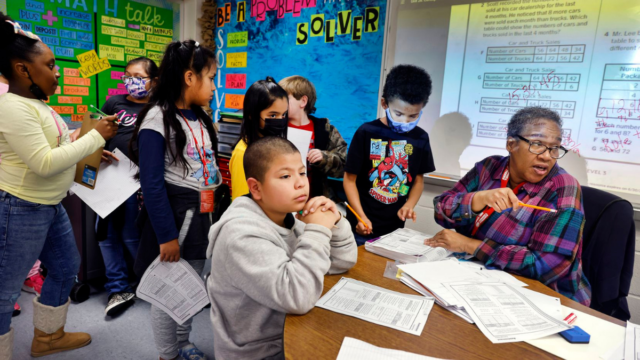
By Emily Donaldson and Talia Richman
TERRELL — Schrildea Glover leaves for the Terrell school bus barn before 6 a.m., treading through the dark gravel parking lot to Bus 21.
She finishes her pre-trip routine — turning on lights, scanning each seat for items left behind and checking the tire pressure — before starting her route into what she calls the “country.”
Glover and her bus wind their way across Terrell, making more than a dozen stops to pick up middle and high school students. She greets each one, “Good morning. Go to your assigned seat.” She drops off the students before eventually turning off the bus’s engine in front of Gilbert Willie Sr. Elementary School at 7:10 a.m.
“All right, that’s the first part,” she said. Glover now has a full day of teaching third graders ahead of her, plus an afternoon bus route.
School districts across Texas are struggling to staff classrooms, bus routes and nurses’ offices as the everchanging pandemic exacerbates existing shortages.
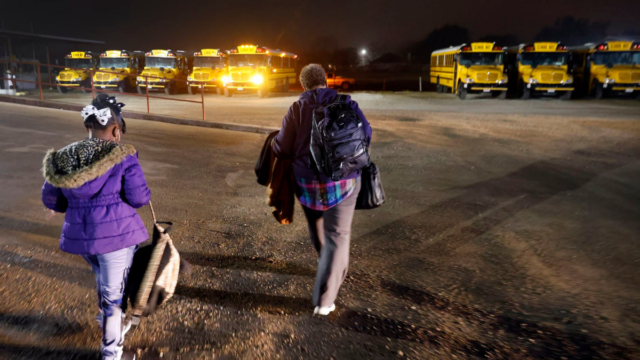
When Glover saw her elementary students stuck at school long after the final bell, she knew she had to help. So she picked up transportation shifts to alleviate the backlog.
In Terrell — a district of about 4,800 students, roughly 25 miles east of Dallas — staffers like her are doing what they can to keep schools open and children learning. Many are pulling double duty.
Still, Superintendent Georgeanne Warnock describes what’s happening in her district this year as “Swiss cheese schooling.”
A teacher might call out for a week to quarantine with COVID-19. But then her own child might test positive, forcing the educator to stay off campus for another 10 days. When she finally comes back, students in her classroom may be sick and miss time with their teacher for yet another week.
Nurses, meanwhile, are busy running COVID tests for students and staffers, trying to root out positive cases before the virus can spread further.
Terrell was forced to close for an extended Martin Luther King holiday weekend, along with several other North Texas districts, because of staffing shortages and spiking cases. It was a wrenching decision for school leaders in places where the majority of kids come from low-income families. Warnock said she hopes it won’t happen again.
“Knowing that we have kids who are going to be hungry, their parents are counting on this being [their] meals,” Warnock said. “All of those things really weigh into the decision … but ultimately, we can’t have 300 kids sitting in an auditorium without coverage.”
To prevent another similar closure, Warnock’s district offered bonuses for substitutes who work a certain number of hours between now and spring break, increased daily rates and made it easier to unlock long-term sub pay.
But the vacancies are hard to get in front of, and Warnock doesn’t see easy fixes. After tracking the number of staff leaving at midyear, Warnock found that this year’s leave rate is more than double what the district experienced in the past three years.
COVID testing and counseling
Almost as soon as Terrell High School’s doors open at 7 a.m., nurse Stephanie Taylor starts getting knocks on her door.
“Test me, test me, test me,” she hears.
Taylor keeps her supply of COVID-19 rapid tests in the back room of her small office, where the door is almost always propped open with a rubber stopper.
Her office is all-inclusive, she joked. It’s open to the sophomore who needs a ponytail holder — and relationship advice. It’s there for the teenager who left his contacts in for a week and could use some saline solution. It’s where a steady stream of diabetic students come to test their blood sugar.
With so many duties and such a big caseload, school nurses felt stretched thin even before the pandemic. Then they added contact tracing, coronavirus testing and grief counseling.
“Nurses always make it work, no matter what,” Taylor said. “And even when you think you’re exhausted and you don’t have anything else to give, you know, here comes COVID.”
Texas law doesn’t require public schools to have nurses on campus. A bill that would have required schools to employ at least one full-time nurse on each campus — and maintain an average ratio of one nurse for every 750 students — never made it out of committee during the 2021 legislative session.
Taylor is tasked with keeping Terrell High’s roughly 1,400 students healthy and safe. She bounces between filling out reports on students’ COVID test results, administering medicine to students with special needs, answering parents’ phone calls and counseling teens in need.
Deep relationships with her students keep Taylor going, even when the job feels utterly exhausting.
Around lunchtime Wednesday, a senior walked into Taylor’s office asking for a COVID test to confirm that his headache wasn’t something more. He came from in-school suspension, he told Taylor, and would soon leave campus for a stint in an alternative program.
Taylor sat him down and swabbed his nose. As the pair waited on the rapid test results, Taylor tried to figure out what was going on with the teenager who visits her often and whom she cares for deeply.
But the teen has gotten into some trouble recently, so she told him that he must be good when he goes over to the alternative school. “Yes, ma’am,” he responded.
“You’ve got to finish school before you can do anything else,” Taylor advised. “And when you get older, baby, you’ll have a job and responsibilities, and you can’t just call it in.”
The test came back negative, and the senior headed back. Previously unmasked, he left the office wearing one of the free cloth face coverings that Taylor keeps stacked on top of her emergency defibrillator box.
Determining whether a student is sick isn’t always so cut-and-dried.
Earlier, a staff member brought a teary student in to see Taylor. The girl’s boss told her to bring in a negative test, but she was feeling anxious about what the result might show.
“It’s gonna make you feel better if you have the negative test and you’ll know for sure, and then you can go back to work,” Taylor told the teenager. “So don’t you want this, just to ease your mind at this point? Can I take something off your plate?”
Once the girl agreed, there was another hurdle: Her guardian hadn’t filled out a consent form allowing for a COVID-19 test. And no one answered at any of the phone numbers listed in the student’s file.
After 13 minutes of troubleshooting, there wasn’t anything the nurse could do.
“As soon as I hear from somebody, I will find you,” Taylor told the teen.
Taylor keeps her Google Sheets tabs open all day, tracking cases across the school.
Terrell High had 10 active cases Wednesday — a big improvement from right after the holidays. About a week and a half ago, Taylor said she recorded double that in just one day.
The entire district now had 41 student cases.
That’s part of why Taylor was relieved when school was canceled Thursday and Friday for the snow.
“This is gonna give our kids time,” she said. “You’re gonna be home. You’re not gonna be out spreading it.”
The subbing superintendent
At the beginning of this school year, Terrell’s central office staff wanted to do something to boost morale. They asked for teachers’ Sonic orders during the month of September and brought them their favorite drinks.
But during a superintendent’s advisory committee meeting soon after, a teacher said they loved the drinks but took issue with the fact that three people with education backgrounds were passing out beverages while teachers were giving up their own conference periods to cover other people’s classes.
It would have been more helpful if those administrators provided relief, the educator told Warnock.
“That hit me like a ton of bricks,” Warnock said.
Since then, Warnock sets aside one day a week to be on a campus. She’s filled in for different classes at various grade levels, stepping in to teach science, English and social studies.
On a recent day, Warnock arrived at Furlough Middle School a little after 10 a.m. She’d already met with principals that morning to announce changes to the district’s teacher evaluation system and responded to some parents’ concerns.
At Furlough, she was assigned to room C209 to fill in during an eighth grade English class.
This class was without a permanent teacher for almost the entire school year. The instructor assigned to the class initially had health issues and resigned early in the fall. For months, Terrell officials struggled to find a permanent replacement, so they assigned substitutes. That’s when Warnock first met the eighth graders. It wasn’t until December that the district found a full-time replacement.
“But now that teacher is out sick,” Warnock said. “And so this group of kids — my heart just breaks for them, because I know they are not getting what they need.”
Furlough’s eighth grade English class is a tricky one to fill in for because the revolving door of short-term teachers has left students without much structure or routine. That’s a challenging environment for a substitute, who may not be an experienced educator, Warnock noted.
The superintendent had to improvise, asking the students for guidance on what components made up a word network.
Throughout fourth period, Warnock paced around her class’ six clumps of desks with an open book in hand. That day, the class was reading passages from The Diary of a Young Girl by Anne Frank. Warnock set the scene for her students, asking them what it would feel like to go into an attic and be quiet for two full years.
“Dang,” one student responded. “I would be dead.”
When the bell rang out for switching classes, Warnock lingered in the hallway and greeted some of the kids she knew and waved at others she didn’t know by name.
As some passed, they questioned who she was. “That’s Mrs. What’s-her-name,” one said. “That’s the superintendent. What’s she doing here?” another student responded.
After a conference period that broke up Warnock’s day, students arrived for their sixth period class and Warnock restarted her lesson on Anne Frank’s diary.
She again went through passages with the group and called on students to read, pausing to pronounce or define words that tripped the kids up.
Splendid. “It’s even better than good.”
Conjecture. “Like a guess or a theory.”
Implore. “I’m begging you!”
As both a substitute and the superintendent, Warnock is keenly aware that state testing is quickly approaching.
Fears over what letter grades campuses will receive in the state’s academic accountability ratings loom over everyone, she said. Being forced home by COVID-19 had the unintended effect of giving everyone a break from the fast pace of school. Now students and teachers are “back on the hamster wheel,” she said.
“And we’re not ready for it.”
Bus routes before class
From the time Glover parked her bus next to the elementary school, unlocked her classroom and the first student marched in with a breakfast burrito in hand, she had a little more than a half hour to prepare for the day.
She unstacked chairs from desks, wiped them down with Lysol and started unplugging Chromebooks from their chargers. As students streamed into Room 213 for class, Glover collected homework and told them to sanitize once they finished breakfast.
“Are y’all ready to start class? Yes? Maybe? No?” Glover asked her students, scanning the room to see if there were any open desks. One of her fellow third grade math teachers was out for the day for dental surgery. A substitute wasn’t available, meaning the remaining educators had to split up the stranded students in their own classes.
The kids began their day with a social studies pamphlet and a science lesson on the order of the planets. They used to start the day with math, but late buses and tardy drop-offs meant some were missing instruction on a STAAR-tested subject, so the teachers adjusted their schedules.
An alarm rang out on Glover’s phone at 9:30, signaling the teacher to move on to her favorite subject: math. She projected Valentine’s Day-themed word problems onto the whiteboard.
Cupid bought 9 small pizzas for his love. Each pizza had 8 slices. Write an equation and solve to find the number of slices.
“What’s important?” Glover asked her students.
“The numbers,” her students shouted back.
Using a white board marker, Glover circled the 8 and 9. Together, she and the class talked through the equation, multiplying 8 and 9 to get the final answer. One boy, thrilled with his work, yelled, “Let’s gooo!”
The class moved on to more word problems focused on multiplication and division. Glover encouraged her students to keep an eye out for clues on how to solve the problems. She told them to look for keywords that would hint at which operation to use and showed them a way to count dots that helped them multiply if they didn’t have their times tables memorized.
Many students don’t have those fundamental skills learned, principal Alexis Dennis said. The gaps are clear, but it’s hard to know if it’s an instructional piece missing or a bigger concern, like an undiagnosed learning disability.
The semester started with “crazy” staff shortages, Dennis said. In the first few weeks, 12 to 15 staffers were calling out every day, so Dennis and her assistant principal had to sub. For the most part, teachers had to split up classes, disrupting the regular routine and pacing of lessons.
“When you put five into an already structured classroom, it’s a different structure,” Dennis said. “It’s just not the same.”
In Glover’s math class, she pulled a few students to her desk to work with closely, awarding high-fives and candy when one showed work and got an answer correct.
She balanced her small group with never-ending questions from the rest of the class, who lined up next to her for help when they got stuck on a problem. After two hours of math, Glover told her kids to line up near the door to switch to a different classroom for reading.
A new class took their seats, pumping hand sanitizer into their palms as they walked into the room before noon. They had just enough time to play some math games on their Chromebooks before lunch.
After Glover deposited the students in the cafeteria, she returned to her room to eat her tuna fish sandwich and prepare to deliver the same lessons for a second time to a new crop of students.
Her day continued after the final bell when she loaded up her bus for a second time, dropped elementary students at their homes and returned to her classroom to plan for the next school day’s lesson.
Glover often doesn’t arrive home until more than 12 hours after she started her day.
“Everybody says, ‘How do you do all that?’ I just do it. I can’t explain. I just do it.”
The DMN Education Lab deepens the coverage and conversation about urgent education issues critical to the future of North Texas.
The DMN Education Lab is a community-funded journalism initiative, with support from The Beck Group, Bobby and Lottye Lyle, Communities Foundation of Texas, The Dallas Foundation, Dallas Regional Chamber, Deedie Rose, The Meadows Foundation, Solutions Journalism Network, Southern Methodist University and Todd A. Williams Family Foundation. The Dallas Morning News retains full editorial control of the Education Lab’s journalism.

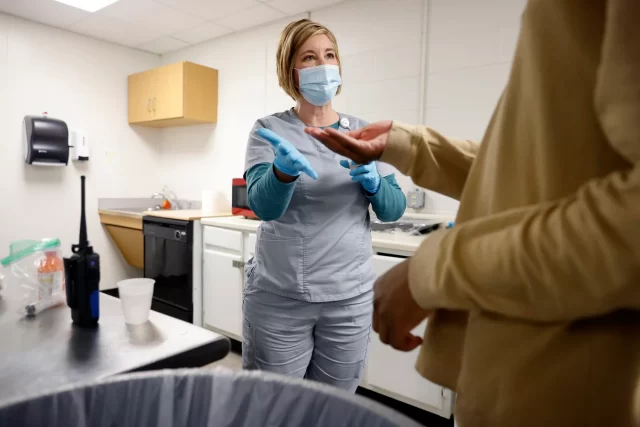
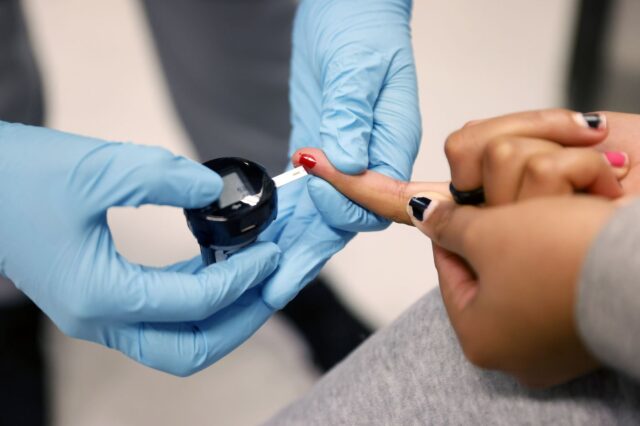
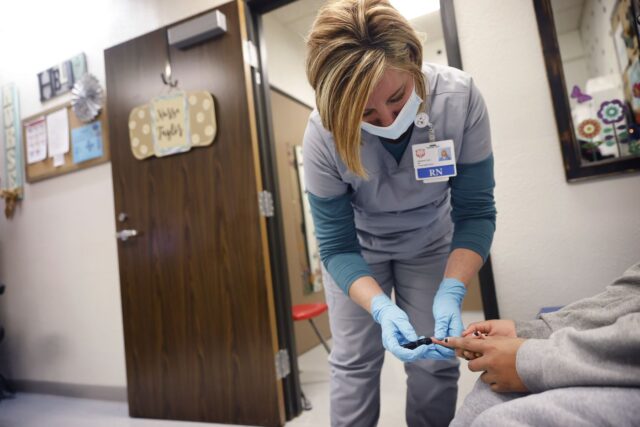
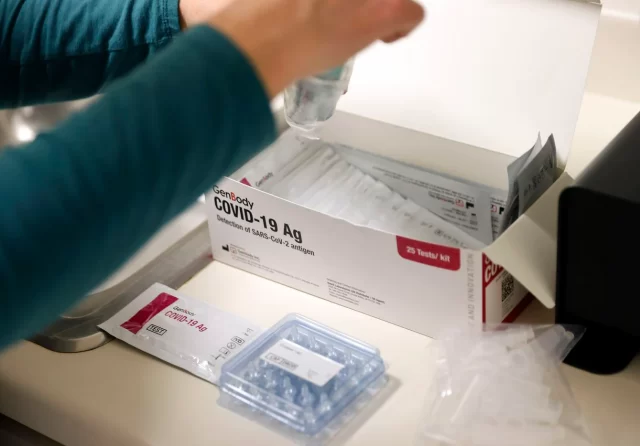
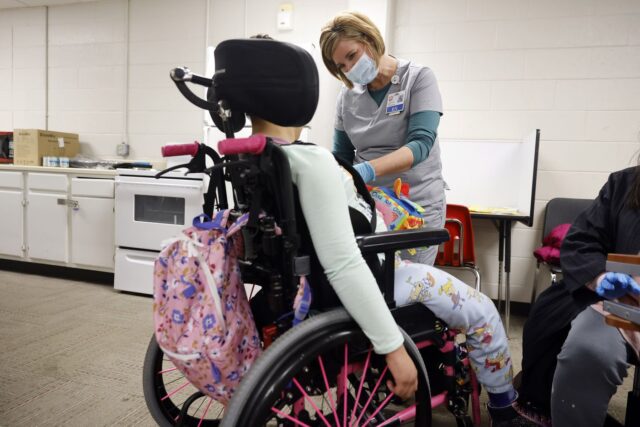
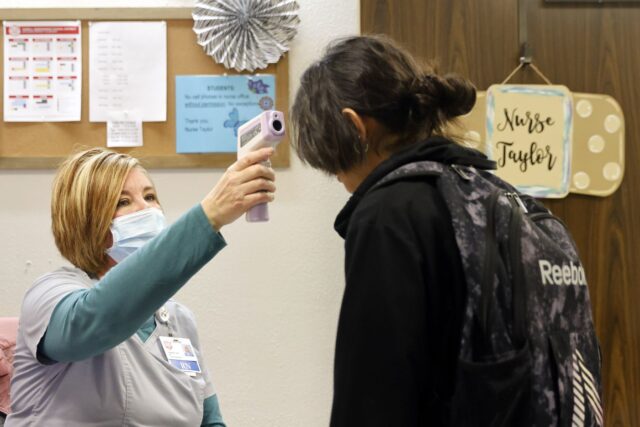
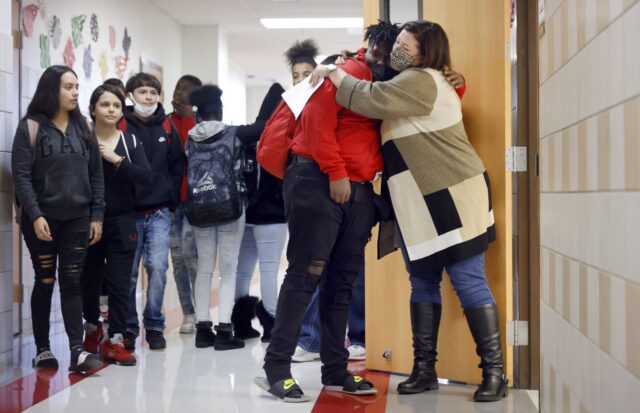
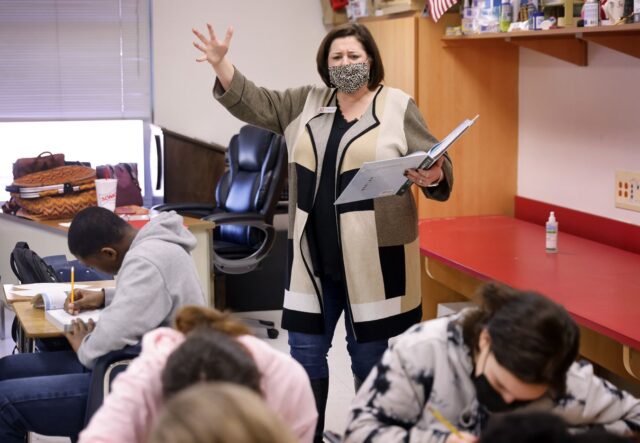
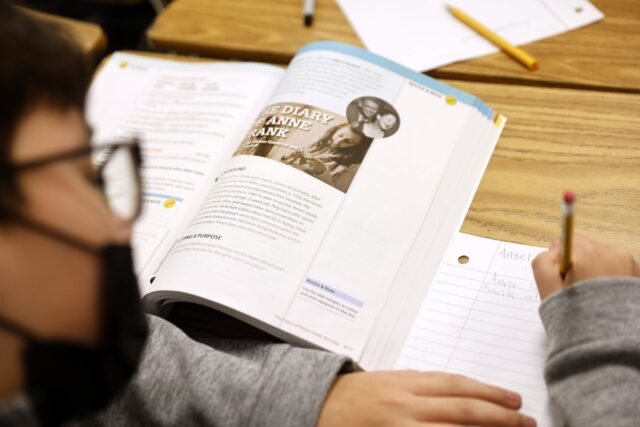
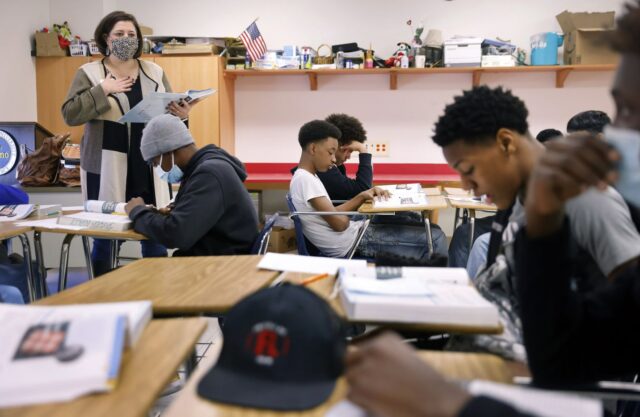
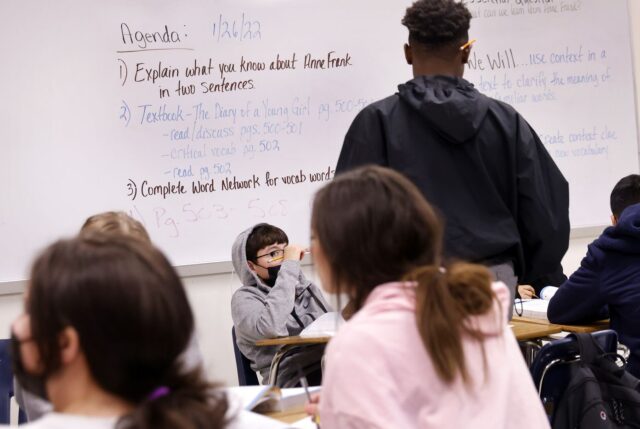
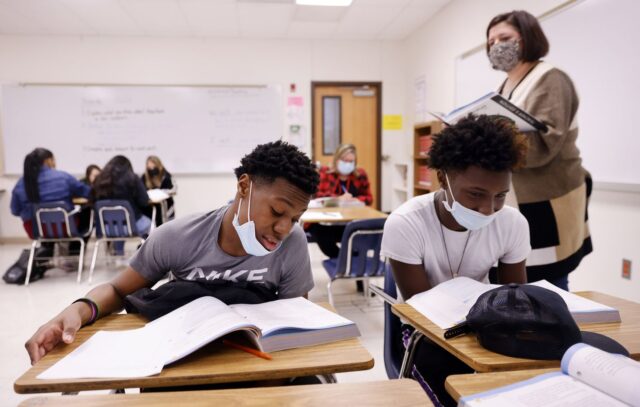
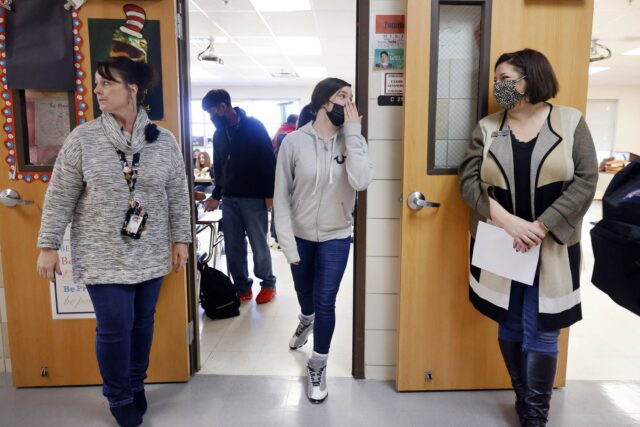
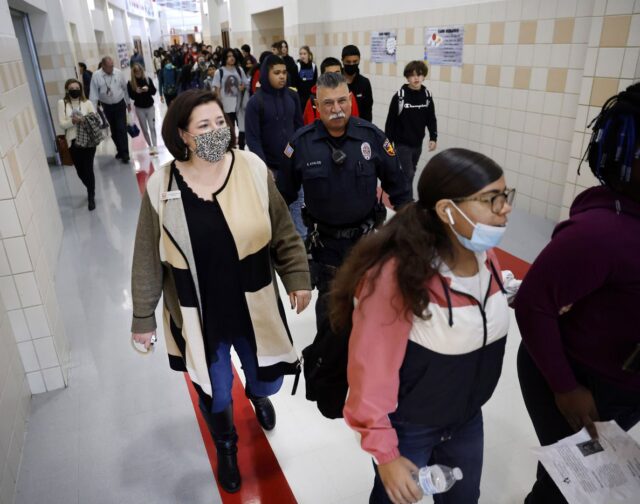
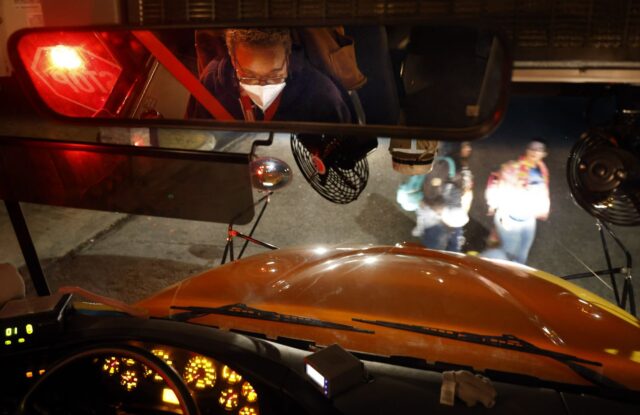
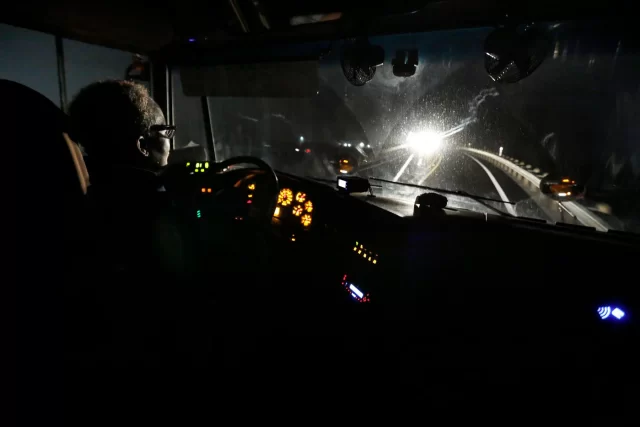
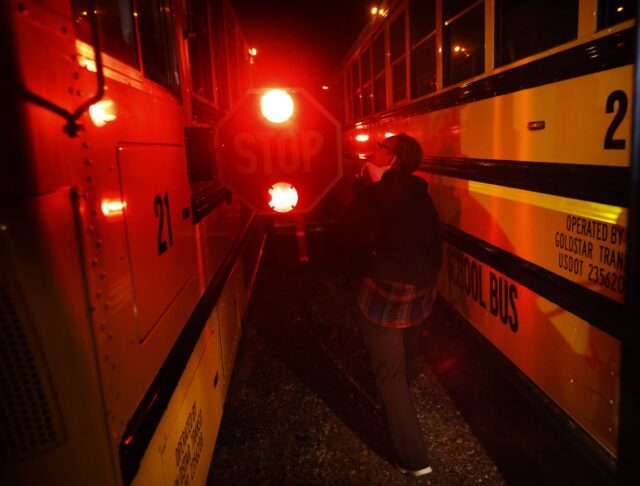
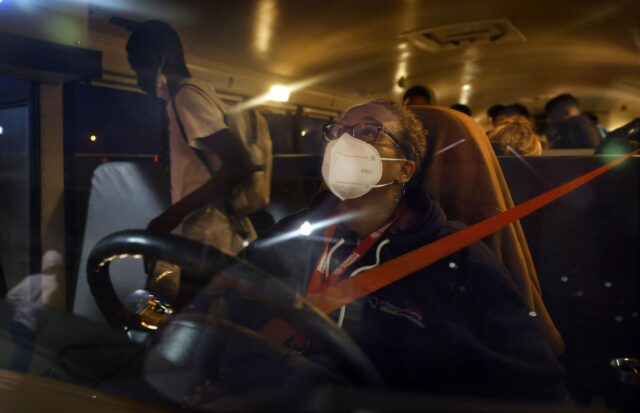
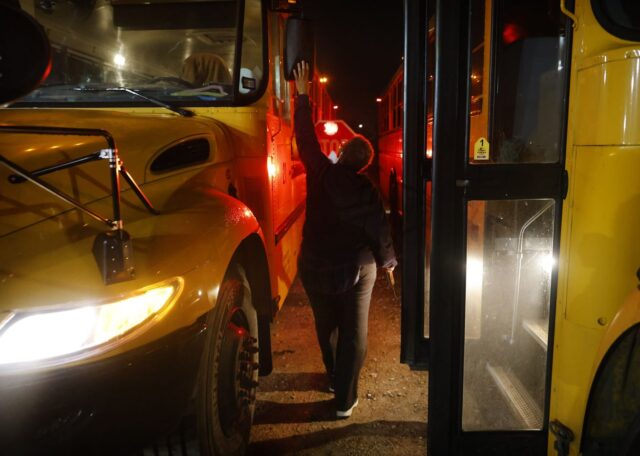
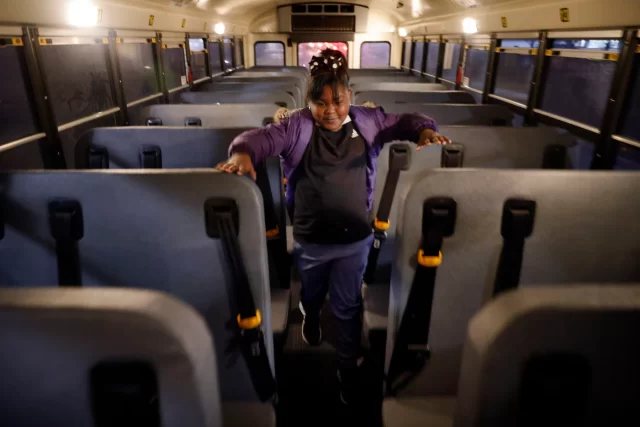
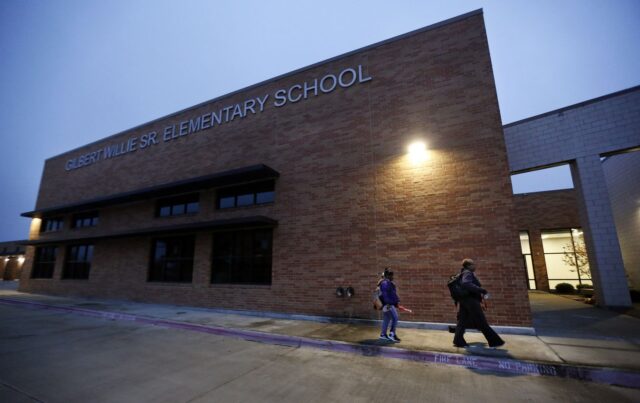
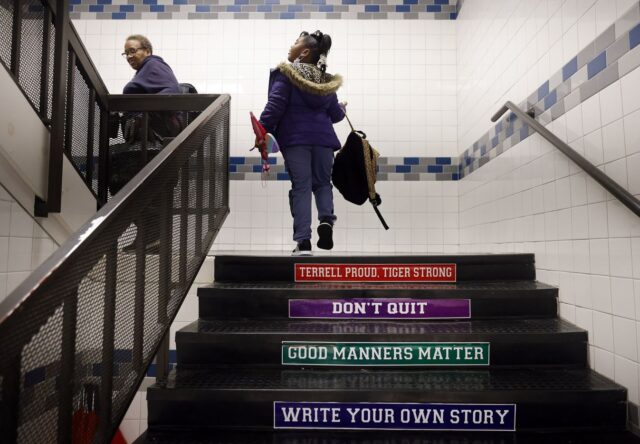
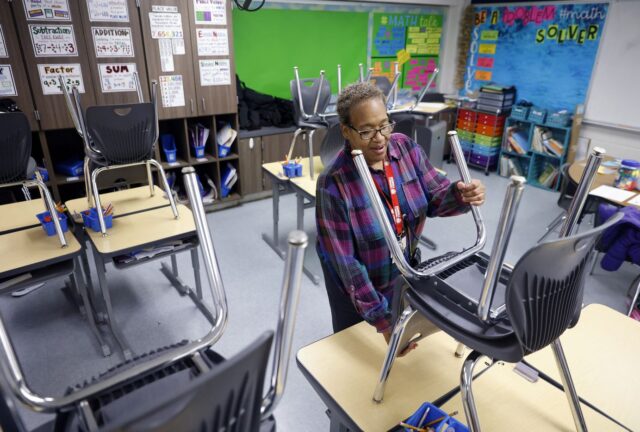
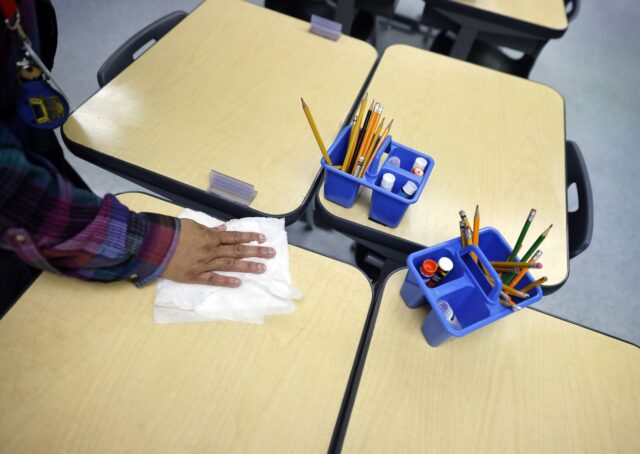
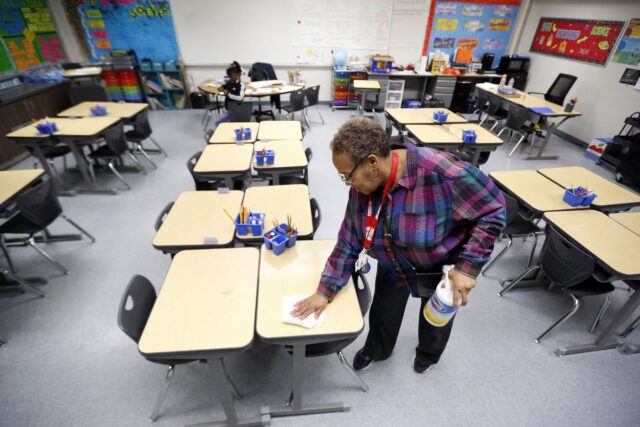
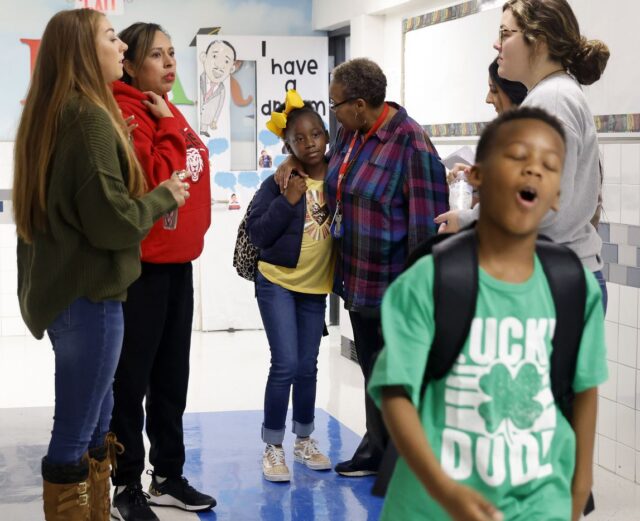
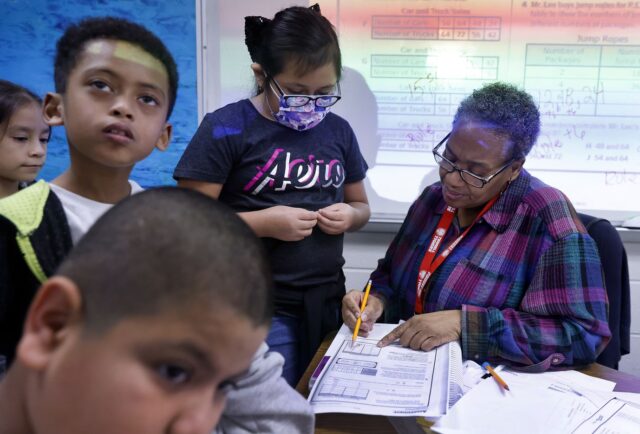
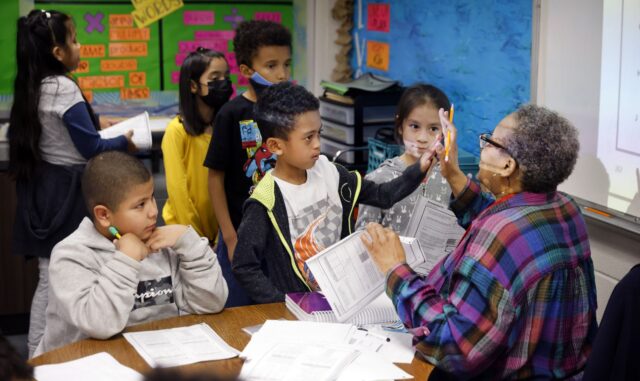

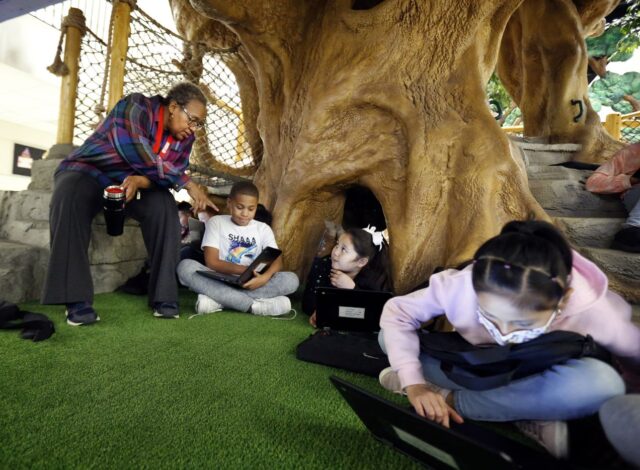








You must be logged in to post a comment Login